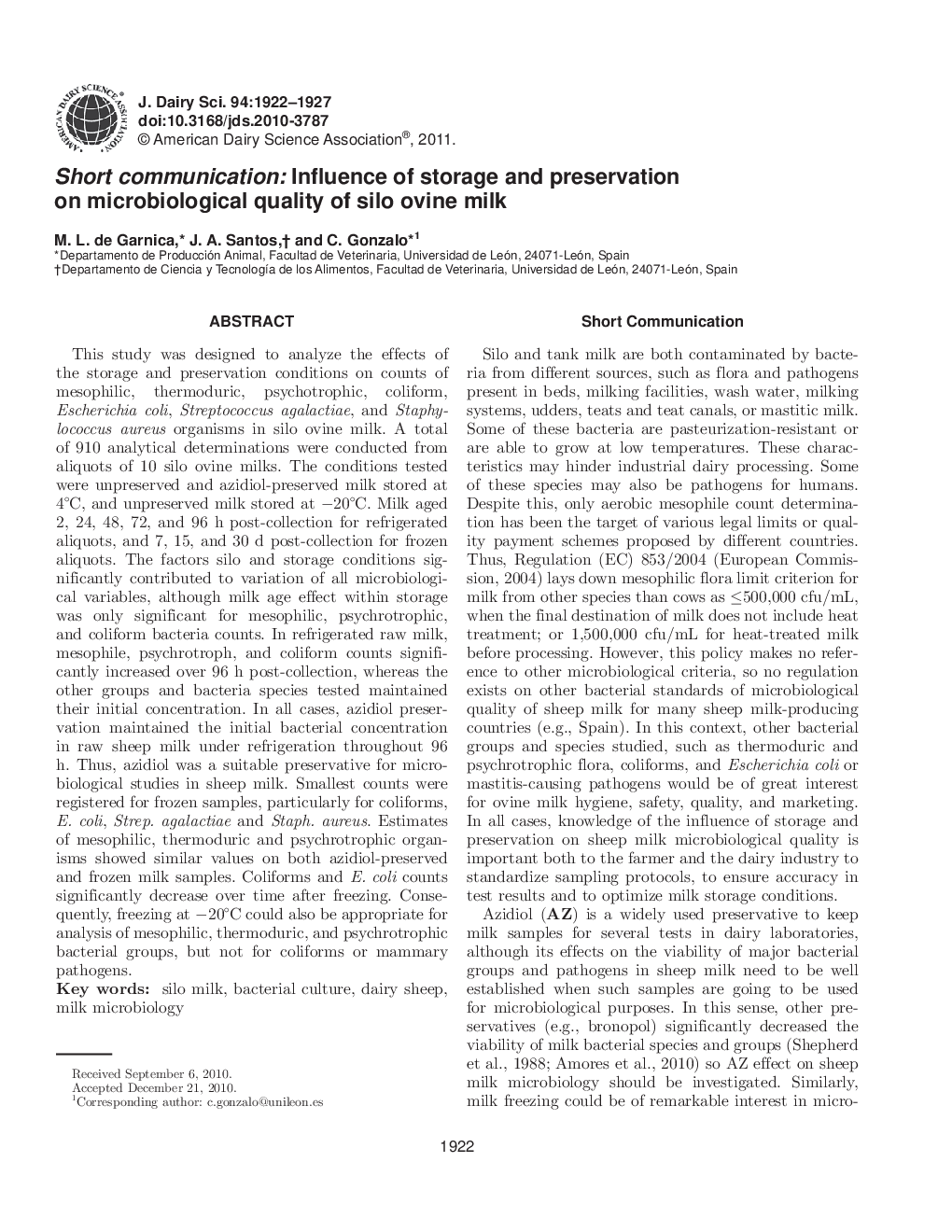| کد مقاله | کد نشریه | سال انتشار | مقاله انگلیسی | نسخه تمام متن |
|---|---|---|---|---|
| 10982131 | 1108088 | 2011 | 6 صفحه PDF | دانلود رایگان |
عنوان انگلیسی مقاله ISI
Short communication: Influence of storage and preservation on microbiological quality of silo ovine milk
دانلود مقاله + سفارش ترجمه
دانلود مقاله ISI انگلیسی
رایگان برای ایرانیان
موضوعات مرتبط
علوم زیستی و بیوفناوری
علوم کشاورزی و بیولوژیک
علوم دامی و جانورشناسی
پیش نمایش صفحه اول مقاله

چکیده انگلیسی
This study was designed to analyze the effects of the storage and preservation conditions on counts of mesophilic, thermoduric, psychotrophic, coliform, Escherichia coli, Streptococcus agalactiae, and Staphylococcus aureus organisms in silo ovine milk. A total of 910 analytical determinations were conducted from aliquots of 10 silo ovine milks. The conditions tested were unpreserved and azidiol-preserved milk stored at 4°C, and unpreserved milk stored at â20°C. Milk aged 2, 24, 48, 72, and 96 h post-collection for refrigerated aliquots, and 7, 15, and 30 d post-collection for frozen aliquots. The factors silo and storage conditions significantly contributed to variation of all microbiological variables, although milk age effect within storage was only significant for mesophilic, psychrotrophic, and coliform bacteria counts. In refrigerated raw milk, mesophile, psychrotroph, and coliform counts significantly increased over 96 h post-collection, whereas the other groups and bacteria species tested maintained their initial concentration. In all cases, azidiol preservation maintained the initial bacterial concentration in raw sheep milk under refrigeration throughout 96 h. Thus, azidiol was a suitable preservative for microbiological studies in sheep milk. Smallest counts were registered for frozen samples, particularly for coliforms, E. coli, Strep. agalactiae and Staph. aureus. Estimates of mesophilic, thermoduric and psychrotrophic organisms showed similar values on both azidiol-preserved and frozen milk samples. Coliforms and E. coli counts significantly decrease over time after freezing. Consequently, freezing at â20°C could also be appropriate for analysis of mesophilic, thermoduric, and psychrotrophic bacterial groups, but not for coliforms or mammary pathogens.
ناشر
Database: Elsevier - ScienceDirect (ساینس دایرکت)
Journal: Journal of Dairy Science - Volume 94, Issue 4, April 2011, Pages 1922-1927
Journal: Journal of Dairy Science - Volume 94, Issue 4, April 2011, Pages 1922-1927
نویسندگان
M.L. de Garnica, J.A. Santos, C. Gonzalo,